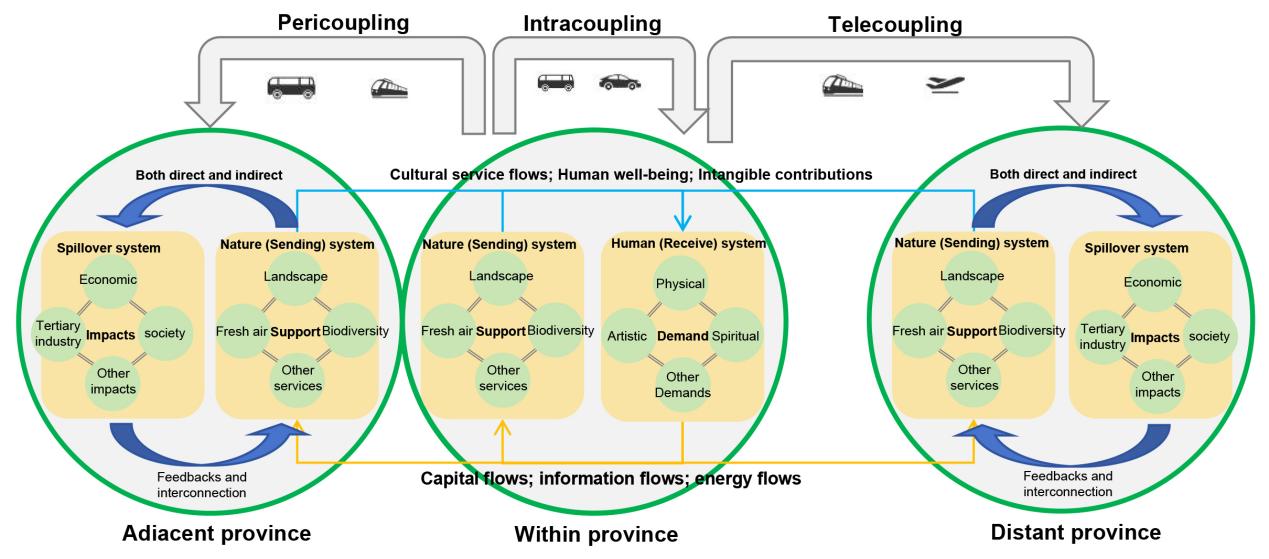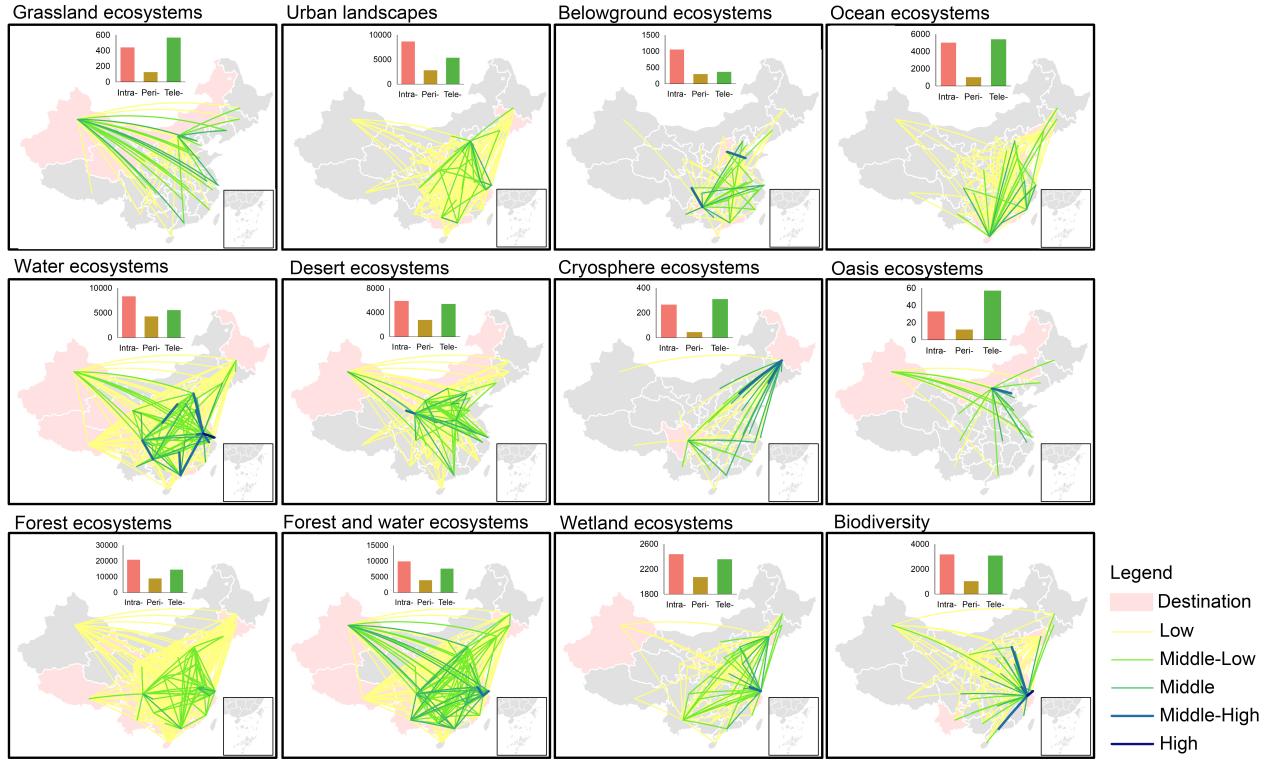Tourism activities facilitate cross-regional population mobility, allowing tourists to acquire diverse physical and cultural experiences in other regions. However, the cross-regional flow of cultural services is inherently dynamic and fraught with uncertainty. A nuanced understanding of tourist flow patterns and satisfaction levels with tourism experiences is pivotal in facilitating the rational allocation of tourism resources, fostering inter-regional tourism cooperation, and contributing to the sustainable, high-quality development of the tourism sector.
To address the above problem, Associate Professor Yu Le’s Research Group from the Department of Earth System Science (DESS), Tsinghua University, based on the metacoupling framework, adopted the IP locations and comments big data of China's 5A-level natural tourist attractions, revealed the characteristics and intracoupling (within-province), pericoupling (adjacent-province), and telecoupling (distant-provincial) flow patterns and intensity, compared the differences of metacoupling intensity across different ecosystems, and quantified tourist satisfaction in various flow modes.
The results show that the current intensity of tourism-based cultural service flow is mainly dominated by intracoupling (0.46), which is higher than that of telecoupling (0.34) and pericoupling (0.20). Most provinces (19) are characterized by the dominance of intracoupling in the flow of cultural services, that is, tourists prefer intra-provincial tourism. The flow of cultural services also presents significant spatial differences and cluster effects. For example, the northeast region shows obvious telecoupling characteristics. In contrast, intracoupling is more significant in southwest China (such as Yunnan, Sichuan, Guizhou, and Guangxi) and southern China (such as Hainan).

Fig. 1. Metacoupling framework concerning the CESF and tourism cross-provinces. Intracoupling, pericoupling and telecoupling, as a whole, are called metacoupling.
The study also reveals the differences in the flow of cultural services across different ecosystems. About one third of tourists choose to obtain cultural services from forest ecosystem (Fig. 2); Tourists who prefer desert ecosystem cultural services account for 9.80%, which is higher than that of ocean (7.96%) and wetland ecosystem (4.78%). Meanwhile, desert oasis and cryosphere ecosystems are more attractive to tourists who are farther away from these locations, thus standing out in cross-provincial coupling, while forests and urban landscapes are more prominent in intra-provincial tourism.

Fig. 2. The geospatial pattern of CESF and its performances across different ecosystems.
Tourists’ preferences for geographical, economic, and social factors exhibited fluctuating inverted-V shaped patterns, with the highest emotional value observed in the pericoupling state, which indicates that CESF in neighboring provinces is more likely to satisfy tourists’ emotional needs. Under the telecoupling mode, tourists prefer to experience the local regional folk culture. Meanwhile, economic conditions are an important factor determining how far tourists choose to travel.
The above research results have been published in the journal Applied Geography in the form of a paper titled “Unveiling interprovincial geographic patterns of 5A-level tourism cultural ecosystem service flows and tourist preferences in China's metacoupled systems”. Liu Tao, a Ph.D. student of Class 2022 in the Tsinghua DESS, is the first author of this paper, and Associate Professor Yu Le is the corresponding author. Co-authors include researchers from Tsinghua University, Michigan State University, the University of Hong Kong and Shanxi University.
Full-text link: https://doi.org/10.1016/j.apgeog.2024.103432
Written by Liu Tao and Yu Le
Edited by Wang Jiayin
Reviewed by Zhang Qiang